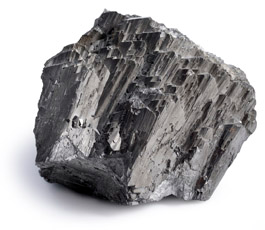

Prawns contain quite high levels of arsenic, in an organoarsenic form which is not harmful to health.
| Density | 5.75 |
| Melting Point | Sublimes at 616°C |
| Boiling Point | Sublimes at 616°C |
Arsenic is a well-known poison. Arsenic compounds are sometimes used as rat poisons and insecticides but their use is strictly controlled.
Surprisingly, arsenic can also have medicinal applications. In Victorian times, Dr Fowler’s Solution (potassium arsenate dissolved in water) was a popular cure-all tonic that was even used by Charles Dickens. Today, organoarsenic compounds are added to poultry feed to prevent disease and improve weight gain.
Arsenic is used as a doping agent in semiconductors (gallium arsenide) for solid-state devices. It is also used in bronzing, pyrotechnics and for hardening shot.
Arsenic compounds can be used to make special glass and preserve wood.
Arsenic was known to the ancient Egyptian, and is mentioned in one papyrus as a ways of gilding metals. The Greek philosopher Theophrastus knew of two arsenic sulfide minerals: orpiment (As2S3) and realgar (As4S4). The Chinese also knew about arsenic as the writings of Pen Ts’ao Kan-Mu. He compiled his great work on the natural world in the 1500s, during the Ming dynasty. He noted the toxicity associated with arsenic compounds and mentioned their use as pesticides in rice fields.
A more dangerous form of arsenic, called white arsenic, has also been long known. This was the trioxide, As2O3, and was a by-product of copper refining. When this was mixed with olive oil and heated it yielded arsenic metal itself. The discovery of the element arsenic is attributed to Albertus Magnus in the 1200s.